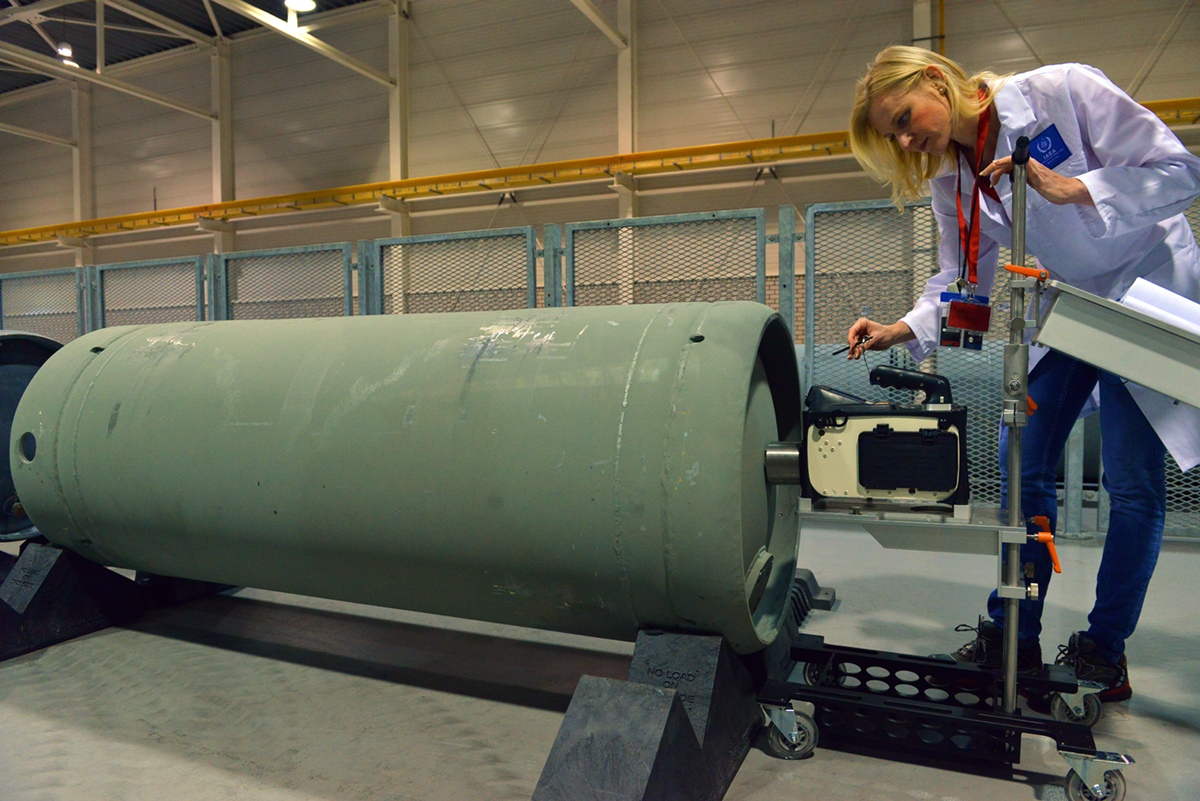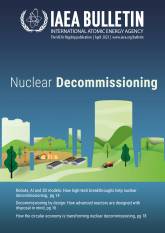
If you would like to learn more about the IAEA’s work, sign up for our weekly updates containing our most important news, multimedia and more.
Applying Nuclear Safeguards During Decommissioning
Jennifer Wagman

Safeguards Inspection at URENCO, Almelo, Netherlands. (Photo: D. Calma / IAEA)
The IAEA helps deter the spread of nuclear weapons through a set of technical measures known as safeguards, which work by verifying that countries are honouring their international legal obligations not to misuse nuclear material and technology. These obligations extend to decommissioning projects. As of March 2023, a total of over 200 nuclear facilities had permanently ceased to operate, either because they had reached the end of their natural life cycle or due to national policy decisions. Countries remain legally obligated to fulfill safeguards agreements throughout the process of decommissioning, and, in some cases, afterwards too.
Since decommissioning is a variable and lengthy process, the IAEA has established guidelines to ensure that safeguards continue to be applied until the facility has been determined to be decommissioned for safeguards purposes.
These IAEA guidelines require two main safeguards objectives to be met: the first is to verify that all nuclear material has been removed from the facility to a known location; the second is to ensure that all essential equipment has either been removed from or made inoperable at the facility.
During decommissioning, countries are encouraged to work with the IAEA to periodically submit plans for related activities and to update design information to reflect changes within the facility. As nuclear material and essential equipment are removed, the IAEA constantly reassesses the safeguards measures and activities implemented at the facility, and revises them as necessary in consultation with the country concerned. Early engagement with countries on the details of this process is known as safeguards by design.
“Safeguards by design is a timely and cost-effective process of collaboration, where we ensure that safeguards obligations are fully understood by all stakeholders well ahead of time,” said Jeremy Whitlock, a Senior Technical Advisor in the IAEA Department of Safeguards. Whitlock works with industry, regulators and other stakeholders to incorporate safeguards in the design phase of new or modified nuclear facilities, including those undergoing decommissioning. “To assist countries in decommissioning a nuclear facility, we have developed guidelines outlining safeguards requirements and activities. These help countries and facility operators understand the necessary steps, and how to work with the IAEA to ensure that decommissioning progresses on the desired timeline.”
As part of decommissioning a nuclear reactor, IAEA safeguards should be followed during a ‘campaign’ that transfers spent fuel to another facility for storage or long-term disposal. For such a campaign, additional safeguards surveillance and/or monitoring equipment is typically installed, with regular reviews of the recorded data.
“By verifying the movement of nuclear material to a storage location, the IAEA maintains continuity of knowledge of the material at all times. This helps to provide credible assurance that the nuclear material is not diverted from peaceful use,” said Lai San Chew, a Nuclear Safeguards Inspector at the IAEA. Chew is responsible for verifying spent fuel items, observing transfers and reviewing updated design information during spent fuel transfers in preparation for final decommissioning.
Once all nuclear material has been removed, the operator of the facility will start dismantling essential equipment. Finally, the operator removes the most important piece of essential equipment, the reactor core, which is disposed of at a waste treatment facility. The country then sends the final updated facility design information to the IAEA in order to formally notify it that the facility has been decommissioned.
After the nuclear material is secured under appropriate safeguards in a storage or long-term disposal facility, the IAEA verifies the absence of nuclear material at the original facility being decommissioned, and also confirms that all essential equipment has been removed or made inoperable. Once the determination is made that a facility has been decommissioned for safeguards purposes, the IAEA discontinues routine inspection and design-verification activities at the facility.
“By working with the country and facility operator to ensure a full understanding of the special needs of decommissioning a safeguarded facility, we help achieve a safe and secure transition to closure of operations that meets all of the country’s international obligations,” says Kerrin Swan, a Safeguards Analyst at the IAEA.






